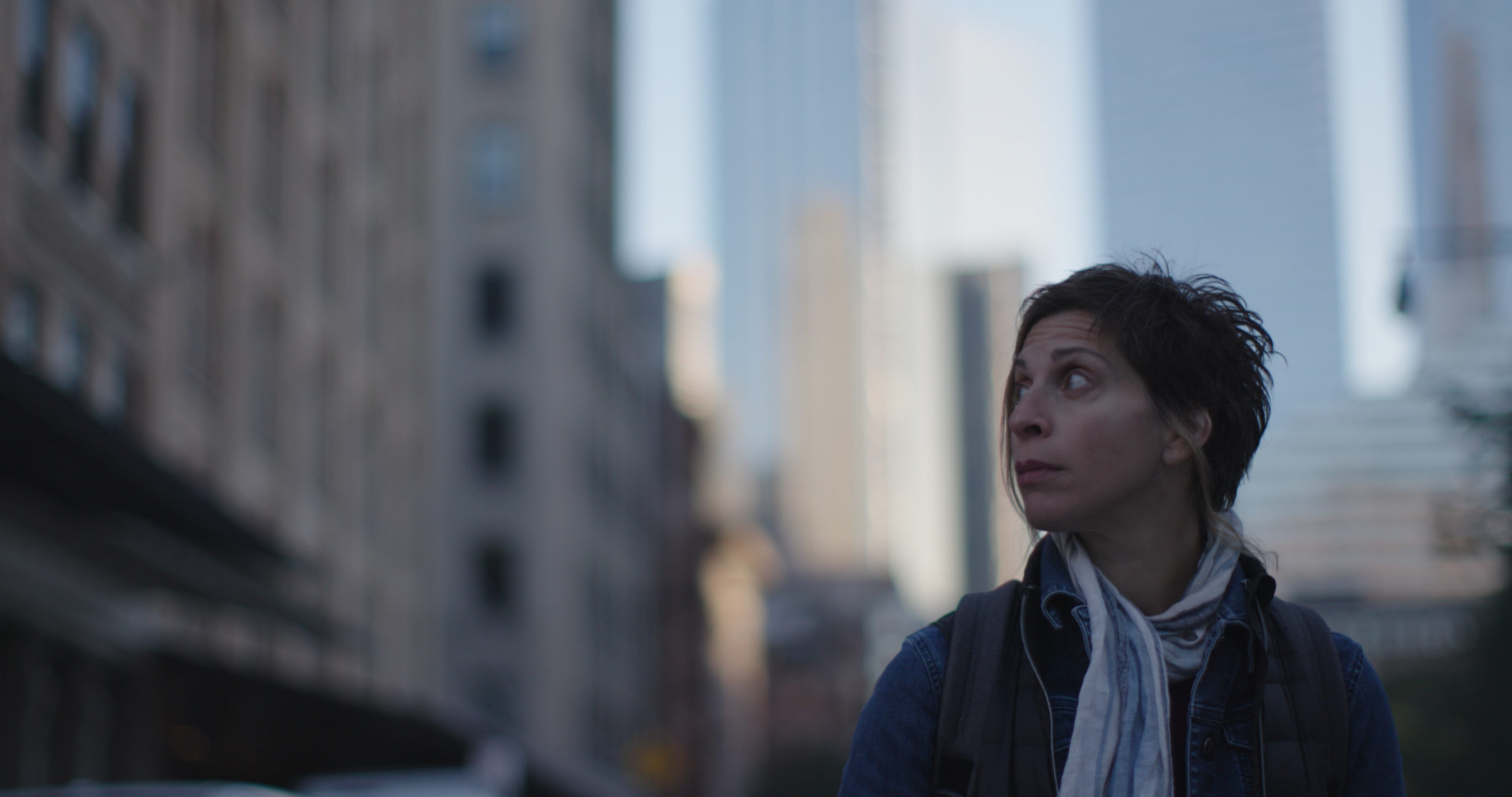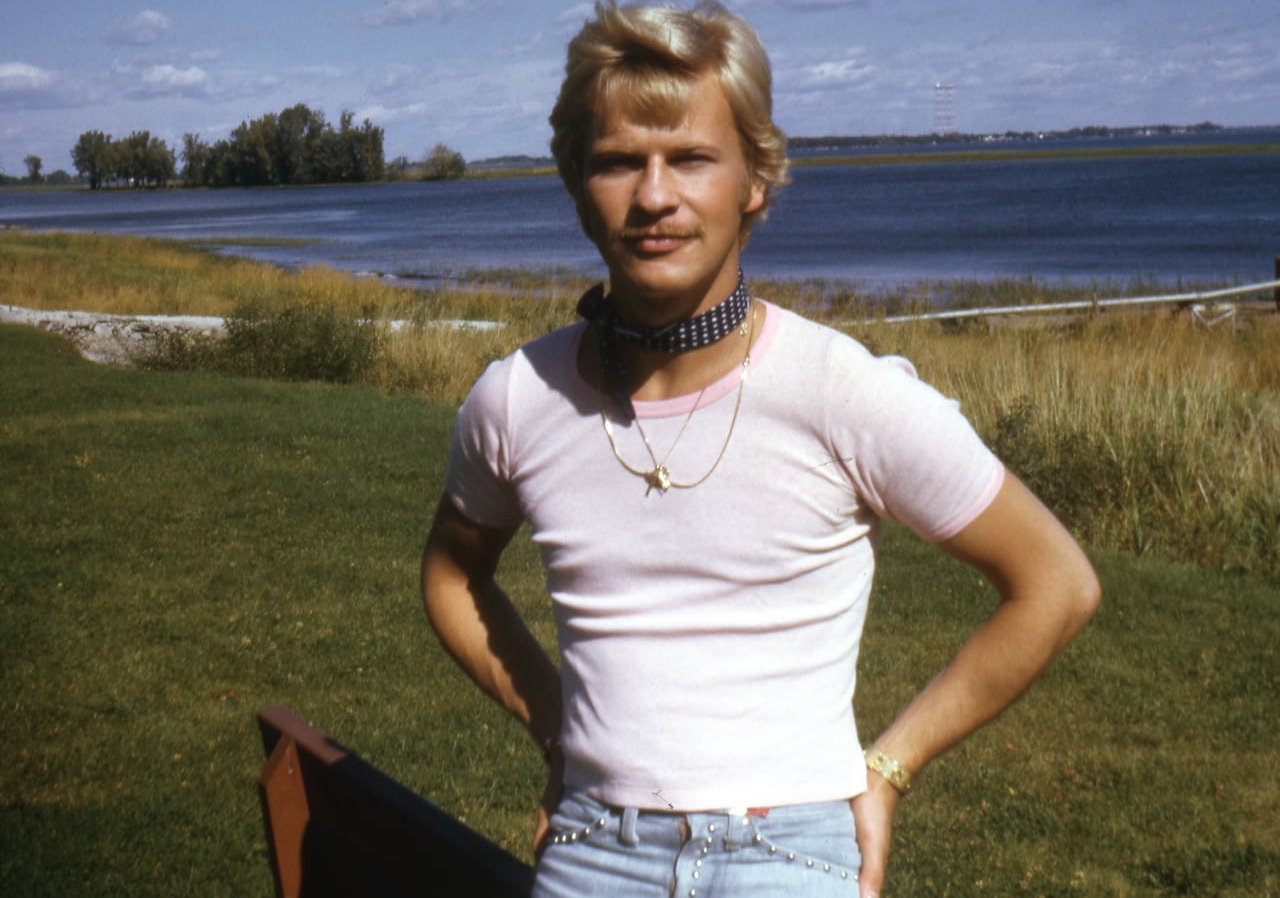If you think celery is expensive these days, don’t even try looking at rental prices. The housing market is in crisis as renters and buyers in cities across the globe struggle to compete with the high cost of living. Fredrik Gertten’s invigorating and eye-opening documentary Push offers a worldwide wake-up call as it explores the rapidly shifting patterns in the “financialization” of housing as homes and rental units become the hottest commodities on the market.
Housing is a human right, though, and Push sees this crisis through the eyes of Ottawa-based activist Leilani Farha, the United Nations’ Special Rapporteur on the Right to Adequate Housing. Gertten follows Farha as she investigates an interconnected pattern of hidden capital with networks in Toronto, Barcelona, Seoul, Berlin, London, and other cities that simply reveal the tip of the proverbial iceberg. Her quest shows audiences the process in which affordable housing becomes a token for hedge funds, investors, and criminal networks to drive up their profits while driving out ordinary citizens. Condos, homes, and apartments sit empty as neighbourhoods become ghost towns owned by anonymous foreign buyers who never set a toe in their luxury homes. Additional threads feature Farha in conversation with great thinkers like sociologist Saskia Sassen and Ada Colau, mayor of Barcelona, while storylines introduce audiences to Robert Saviano, writer of the book and film Gomorrah, which exposed the machinery of Italy’s crime syndicates, while jovial neighbours in a Toronto pub congregate and share happy times over cocktails and pints.
Leilani: What is the purpose of PUSH? from WG Film on Vimeo.
The quest is not a hopeless one as Gertten’s film captures the community spirit that endures and gives life to the cities. Push is ultimately an empowering story of resistance as it reminds audiences that buildings might grow taller and condos might grow uglier, but it’s up to the people who live in and around the shifting market to fight for the character of their cities. When push comes to shove, a city is nothing without its inhabitants.
POV recently spoke with Gertten ahead of Push’s theatrical release in Canada to discuss his process working with Farha, his discoveries while making the film, and the relationship of Push to a significant body of work that includes the urban study Bikes Vs. Cars and financial exposé Bananas*.
POV: Pat Mullen
FG: Fredrik Gertten
This interview has been edited for brevity and clarity.
POV: From what perspective did you approach this topic? Do you rent/own, are you an urban dweller/rural resident, etc?
FG: I live in Malmo, Sweden. It’s the third biggest town in the country. I live in a rental apartment. It’s owned by the city.
POV: And how does your situation compare to what you saw while making the film?
FG: I’m not that bad off. Even with city owned [housing], if you had a different political set up, it could totally change and they could sell my house, so I’m not safe in that sense. That’s something I share with a lot of other citizens. We have the right people in government right now, so I think we are quite safe.
POV: How did you meet Leilani Farha?
FG: When you make a film, you do research and you look around. I think one of the best research platforms is actually Twitter. There’s a lot of interesting people who are active on Twitter. They share stories; they talk to each other. I started to follow Leilani on Twitter. Maybe half a year later, I saw an interview that she did for a Vancouver magazine. She had some lines about what did we call this “financialization” of housing that I found really interesting. Then I contacted her and asked her for a Skype [call]. I sent her a few of my films and asked if she would like to be part of the film. Of course, at that stage, I didn’t know that she would be the lead character or if she would just somebody in an expert role.
POV: What ultimately made her the guide through which we see the housing crisis?
FG: We decided to meet in London and we shot for a few days. I went back to my editor; we sat down, we tried it out, and we found out that she works well on camera. Leilani is more than an expert. She’s out in field doing research trying to understand and see what’s going on. Most important of all is that Leilani’s search has a global level. If you want to understand housing, you need to zoom out from your national politics and zoom out to the global pattern. I think that’s what this film can bring to the table. If you see the global pattern, you can see the hedge funds, who don’t own shit. We have a new kind of global landlord.
POV: How did you choose which cities to feature? Which characters?
FG: I picked Seoul in South Korea because Leilani was on an official mission there, so I could follow her work. I chose Toronto because I wanted to shoot in a Canadian city since Leilani is Canadian and I’ve been to Toronto more times [than other cities], so I have some knowledge of the city. I knew about the bar, The Communist’s Daughter, which I find to be a kind of meeting place that makes a city a city.
POV: It’s a great spot, and such a nice bookend to the film.
FG: I have been there a few times, so I always pictured it as part of this story. Of course, it could have been Vancouver instead of Toronto. That’s a classical Canadian story. Everybody talks about Vancouver, but Toronto is actually worse right now. When the financial backers put down their feet it a city, it’s with a lot of energy and they shake the city.
POV: What happens to this new economic ecosystem when people can no longer afford to buy property? This film also seems like is about so much more than the housing crisis. Is this method of financial capital sustainable for society?
FG: It’s a very relevant question. City landscapes are almost like airports. You see that with every condo: the contents of the commercial spaces are not the local ones. A new kind of city is growing up. It killed the old city. What happens with all of us is that it’s obviously harder and harder to buy something. The ownership of the city is less and less by the citizens. 50 years ago, 70% of the houses were owned by the people who lived in them and the rest might have been on mortgages and so on. Now we are maybe at 50%. If you are lucky to buy or own something, you own maybe 15% or 20% of the house. The rest of the city is in the hands of financial institutions or financial players.
If the market goes down, the guys who are creating all these deals are all gone. They already made their money. That’s what Saskia Sassen says, this is like mining. Whenever they’ve mined out money, they leave; they just go on and they leave your neighborhood empty of resources. It’s very aggressive.
I don’t know where we’re going because the work is still in towns. We can see that the working class is sitting on trains more and more. In the film, we meet the rent strikers, and one of the strikers is from Hamilton. Prices are shooting up on people’s homes in Hamilton. Going to Hamilton from Toronto is not even the answer for you anymore.
POV: Airbnb comes up in one conversation of the film, but I was surprised that it wasn’t mentioned as frequently. Did that come up much in conversations, the growth of short-term rentals changing the market for long-term rentals?
FG: I shot a segment in Kensington Market where five or six people had made an Airbnb hotel. Unfortunately, they didn’t end up in the film. We touched on the subject through the mayor of Barcelona, who mentions it. Of course, “touristification” is also a part of the problem, but it’s not the whole problem. Right now, I am in Portugal. I was in Lisbon and Lisbon is the most clear-cut example of what we talked about in this film. There are buildings that have been bought up in speculation and they just stand empty, empty, empty, empty. You see a lot of tourists and a lot of Airbnbs. The people of Lisbon tell us that this happened in the last two years and [residents] were totally pushed out. It’s a violated city.
From the most obvious angle, I would say Airbnb is to blame but I think the major factor is the investors. Portugal did the same thing as Vancouver a while ago. They created a “golden visa” that you need to invest. In Portugal’s case, it was an investment of €500,000 in the country to get a visa. Vancouver did the same with the Hong Kong and Chinese buyers in the [late 1980s]. You get a lot of money, but you also get a lot of criminal money. The best and the easiest way to park criminal money is in housing. The story with Roberto Saviano [the screenwriter of Gomorrah] shows the tax havens and how they push up the prices of their own houses. They sell to themselves because they can launder even more money.
POV: As you’re taking the film on the festival circuit and seeing it open internationally, have the audience reactions differed from city to city or are reactions universal?
FG: It’s more universal than you can believe. You can sit in your town and feel that you are the biggest victim or you can say that this is shaking the planet right now. This is almost the extreme end of neoliberalism. We remember capitalism as something where you produced things that people bought—you did it better than others and then you thrived. Now, they don’t produce things. They just invent financial instruments and with these financial instruments, they invade sectors and they dig out what’s in there.
POV: How is Push a continuation of your studies in previous films?
FG: If you look at Blackstone, for example, they started up in the ’80s. They were part this kind of Wall Street movement that bought up old American companies and then cut them into pieces, digging out values and seeing what could be real estate. I did this film, Bananas*. The owner of Dole Food Company sold the Dole plantations in Hawaii, made real estate on it, fired all the workers, and there was no Dole activity left in Hawaii. He bought a big factory in South Carolina. It was the biggest textile factory in the state—like, 20,000 employees—and fired all of them, stole their pension fund, and made real estate out of it. It’s the same today. It’s not about making a better product. It’s all about looking for what they call hidden value.
What we see now in Hamilton or in Parkdale [in Toronto] are that they found the most hidden values, the most under-valuated homes on the market, in housing that poor people can afford. If you live in a house where you can actually afford to pay the rent, you should be worried because they are looking for you. They want your house. This happens in my own country, Sweden. Citizens are moving really slowly. It’s a global pattern.
Bananas!* from WG Film on Vimeo.
POV: You previously ran into legal trouble when Dole pushed back against Bananas*. How did that experience guide your approach to Push?
FG: Big companies don’t like when you talk about them, but there’s nothing you can do about it. It didn’t really guide me. Of course, I was a little bit careful—not letting them know too soon that I was working on this film, but there’s basically nothing I can do. We have freedom of speech and freedom of press in our countries. We have to use it. That’s the bottom line. I think that Dole’s behavior in coming after me wasn’t very productive for them. It’s actually cost their brand a lot. They spent two to three million dollars to shut us down, which was extremely tough for us.
I think that Blackstone will use their money to influence lawmakers in different countries because right now you see legislation being made. Portugal just last week took a new legislation on the right to housing. Canada did too recently and Germany, in Berlin, just put a new law in the region that is a five-year rent cap. A lot of cities and countries are trying to find countermeasures to what’s going on. It’s very late in the game and Blackstone and the hedge funds are on a roll. They will invest tons of money into lobbying and political campaigns. That’s something we should look out for.
POV: Joseph Stiglitz mentions Netflix, Amazon, Facebook, and Google in the film because so much of the crisis in the housing industry mirrors what we’re seeing in the media. How does the new financial reality of advertising mirror the housing crisis?
FG: Roberto Saviano started out as an amazing investigative journalist. More interesting than the violence of the film, especially if you’ve read the book, is about how the Gomorrah organized their business. That’s why they’re coming after him because he’s revealing their base. They don’t mind how he tells stories about how they kill people.
Similarly, Professor Stiglitz says that these new companies are using their information. They know more than others do sooner. That’s basically their business, so they are the ahead of their competitors and of all civil society. Netflix is very much about data mining. They actually know more about customers and trends and so on, and they don’t share it. I sold several films to Netflix and they don’t share a single number with me. I don’t know anything about my audience. No filmmaker knows anything about the numbers from Netflix. That’s their business and, with data, you can know a lot. Blackstone for example, was able to move before the financial crisis in 2008. They were ready when everything fell and then they moved in. Having more information than us is key. If universities had the data, we could use it for the common good.
POV: What can audiences do?
FG: The first step here is to acknowledge the problem. Leilani says this film is like An Inconvenient Truth. That film wasn’t at all about the solution to climate change. It was about saying that there is climate change. Let’s start by saying that this problem is not just about gentrification. It’s much deeper. We have to change our discourse. The next thing is to monitor your own city. Find out who are the actors. Look into the pension funds: are they public pension funds? Are, say, the teachers’ pension funds investing in something that make lives more expensive for others, for retired teachers, and so on? Use the information to go to your politicians and to your lawmakers to make them change the rules. We need rules that make business fair for a local landlord. Go to the local shop owner. Can the local shop compete with Starbucks, which is part of the same game?
Look to Berlin and Barcelona, two cities where people are really active and pushing their politicians into action. As this as a global struggle, be inspired by what happens in other cities. You think that Toronto is special? Yes, it is, but it’s in this game. It’s just one more city. That also goes for Hamilton. The only place where you can go and live at a decent cost in this word is a place where there are no jobs, no services, and no schools.
POV: What were some of challenges of representing this story visually? Condos are great for creating impersonal aesthetics with metal and glass, but how did you create the dynamic between people and their environments?
FG: I worked with two female cinematographers, Iris Ng from Toronto and Janice d’Avila from São Paulo. I worked with both of them on Bikes Vs. Cars. In Bikes Vs. Cars, I had the bicycle as a romantic tool, something to create a little smile on the film and so on. I needed to find something that was the counterpart of Blackstone and thought, “It must be community.” The images of community are really important to create that little smile. That little bit of hope. That’s why these images and small breaks with the Communist’s Daughter between stories are really important. You can print everything people say and make a book out of it, but we make films because we believe in the power of our film.
POV: I love that image of the woman in Toronto who is planting amongst the rubble in this fenced-in area surrounded by construction sites. It’s like she’s making the last stand for her community.
FG: That’s a community garden. It’s been there for a long time, but now it’s totally surrounded by this is condos. That shot is also the beauty of resistance. That kind of care is what cities need. I think we are in a time of crisis in cities, but people have been in crises before and it’s all about fighting back.
Push opens in Toronto on July 19 at Hot Docs Ted Rogers Cinema and in Vancouver at Vancity Theatre.
It also screens at Open Roof Festival on July 24.











